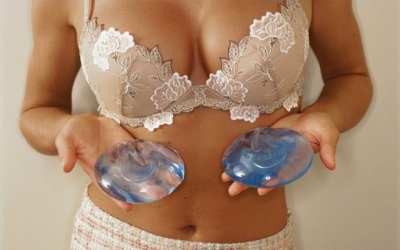- Latest news▼
-
15:11, April 24 Zombie deer disease possibly linked to hunters’ deaths

-
12:27, April 23 Appetite: Scientists found out the secret to the appeal of large portions of fast food

-
10:33, April 23 Scientists test new approach to fighting viruses

-
08:38, April 23 Ketamine may help with postpartum depression

-
22:12, April 22 Unhealthy amount of sugar found in baby food products of a well-known brand

-
19:41, April 22 Air pollution puts health of more than 1.6 billion workers globally at risk

-
17:25, April 22 Scientists found baked goods and lack of sleep to be more dangerous than alcohol

-
16:02, April 22 342 cases of measles recorded in Armenia so far in 2024

-
15:29, April 22 BrainStimulation: electrical brain stimulation alleviates anxiety and depression in the elderly

-
08:27, April 22 Cognitively stimulating jobs in midlife could lower dementia risk in old age, study finds

-
20:37, April 21 Environmental Health Perspectives: Microplastics ingested with food and water can spread from the gut to the brain

-
22:41, April 20 Scientists develop new method to safely stimulate immune cells to fight cancer

-
20:46, April 20 Blood test can determine who is at risk of developing multiple sclerosis - scientists

-
18:36, April 20 Next pandemic likely to be triggered by flu - scientists

-
12:16, April 19 Scientists grow human mini-lungs in lab

All materials
5 things you should know before getting a boob job

According to statistics by the American Society of Plastic Surgeons, breast augmentations were the most requested cosmetic surgical procedure in 2014. Double board certified New York plastic surgeon Adam R. Kolker, M.D. who specializes in breast enhancements, shares with Cosmopolitan.com his insider tips on what you should know before getting breast surgery.
1. Your first breast surgery probably won't be your last. Twenty-five percent of women will need another surgery after 10 years because implants don't last forever. The implant could begin to leak over time or a "scar shell" could develop around it, warping the shape and causing a need for new implants. Weight loss, pregnancy, and change in preference are other factors that could lead the patient having another surgery after a few years.
2. It will cost you around $3,678. This average total, according to the 2013 statistics from the American Society of Plastic Surgeons, is based on the surgeon's fee only and does not include the cost of anesthesia, facilities, and materials (stitches, bandages, drapes, etc.). The price will also depend on doctor, patient, and region. The cost of reduction, though, varies greatly patient to patient. A reduction procedure could take three to four times longer than an augmentation, and the cost would reflect that.
3. Generally, patients will only have to take five to seven days off work for a breast augmentation and about the same for a reduction. You won't be feeling 100 percent after that week, but you'll be in good-enough shape to head back to the office if your job doesn't require manual labor. However, if the implant is placed behind the muscle instead of on top (many women choose to do this for a more realistic look and less chance of a scar shell forming around the implant), recovery will be a little harder and you might be sore longer.
4. Breasts with implants feel different to the touch than real breasts. Although silicone breasts feel similar to real breasts, they are still manmade and don't feel like natural breast tissue. You'll be more likely to notice there's an implant in a woman who began with little breast tissue than a woman who had more breast tissue to begin with. Smaller implants and those that are placed below the muscle are harder to detect.
5. Breast augmentations and reductions could possibly affect your ability to breastfeed in the future. Women who have implants oftentimes choose not to breastfeed so the data sets on these women are unclear. However, if you have an areola incision, there's a small risk you could damage minor ducts and could disconnect the areola complex with the main portion of the gland, hindering your ability to breastfeed. Women who have underarm incisions or incisions in the crease of the breast should not have a problem.
Follow NEWS.am Medicine on Facebook and Twitter
- Video
- Event calendar
- Archive
- Most read
month
week
day
- JAMA Oncology: Urine test can help rule out high-grade prostate cancer with almost 100% accuracy, study shows 1228
- Daily Mail: Elderly woman in China gets infected with brain-eating amoeba 1178
- Obesity: exercising before breakfast helps you lose weight faster 1160
- The Conversation: childhood trauma can cause pathological hoarding 1159
- Daily Mail: Satiating food reduces cravings for sweets, nutritionist says 1134
- Scientists grow human mini-lungs in lab 1125
- Next pandemic likely to be triggered by flu - scientists 768
- Scientists found baked goods and lack of sleep to be more dangerous than alcohol 695
- 342 cases of measles recorded in Armenia so far in 2024 658
- Blood test can determine who is at risk of developing multiple sclerosis - scientists 639
- Scientists develop new method to safely stimulate immune cells to fight cancer 634
- Cognitively stimulating jobs in midlife could lower dementia risk in old age, study finds 618
- BrainStimulation: electrical brain stimulation alleviates anxiety and depression in the elderly 572
- Air pollution puts health of more than 1.6 billion workers globally at risk 416
- Unhealthy amount of sugar found in baby food products of a well-known brand 410
- Find us on Facebook
- Poll





